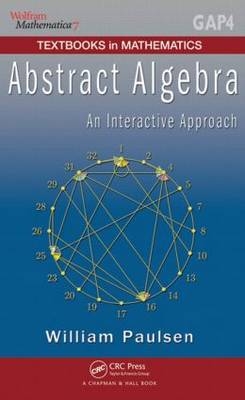
Abstract Algebra
Crc Press Inc (Verlag)
978-1-4200-9452-7 (ISBN)
- Titel erscheint in neuer Auflage
- Artikel merken
By integrating the use of GAP and Mathematica®, Abstract Algebra: An Interactive Approach presents a hands-on approach to learning about groups, rings, and fields. Each chapter includes both GAP and Mathematica commands, corresponding Mathematica notebooks, traditional exercises, and several interactive computer problems that utilize GAP and Mathematica to explore groups and rings.
Although the book gives the option to use technology in the classroom, it does not sacrifice mathematical rigor. It covers classical proofs, such as Abel’s theorem, as well as many graduate-level topics not found in most standard introductory texts. The author explores semi-direct products, polycyclic groups, Rubik’s Cube®-like puzzles, and Wedderburn’s theorem. He also incorporates problem sequences that allow students to delve into interesting topics in depth, including Fermat’s two square theorem.
This innovative textbook shows how students can better grasp difficult algebraic concepts through the use of computer programs. It encourages students to experiment with various applications of abstract algebra, thereby obtaining a real-world perspective of this area.
William Paulsen is a Professor of Mathematics at Arkansas State University.
Understanding the Group Concept
Introduction to Groups
Modular Arithmetic
Prime Factorizations
The Definition of a Group
The Structure within a Group
Generators of Groups
Defining Finite Groups in Mathematica and GAP
Subgroups
Patterns within the Cosets of Groups
Left and Right Cosets
How to Write a Secret Message
Normal Subgroups
Quotient Groups
Mappings between Groups
Isomorphisms
Homomorphisms
The Three Isomorphism Theorems
Permutation Groups
Symmetric Groups
Cycles
Cayley’s Theorem
Numbering the Permutations
Building Larger Groups from Smaller Groups
The Direct Product
The Fundamental Theorem of Finite Abelian Groups
Automorphisms
Semi-Direct Products
The Search for Normal Subgroups
The Center of a Group
The Normalizer and Normal Closure Subgroups
Conjugacy Classes and Simple Groups
The Class Equation and Sylow’s Theorems
Solvable and Insoluble Groups
Subnormal Series and the Jordan–Hölder Theorem
Derived Group Series
Polycyclic Groups
Solving the Pyraminx™
Introduction to Rings
Groups with an Additional Operation
The Definition of a Ring
Entering Finite Rings into GAP and Mathematica
Some Properties of Rings
The Structure within Rings
Subrings
Quotient Rings and Ideals
Ring Isomorphisms
Homomorphisms and Kernels
Integral Domains and Fields
Polynomial Rings
The Field of Quotients
Complex Numbers
Ordered Commutative Rings
Unique Factorization
Factorization of Polynomials
Unique Factorization Domains
Principal Ideal Domains
Euclidean Domains
Finite Division Rings
Entering Finite Fields in Mathematica or GAP
Properties of Finite Fields
Cyclotomic Polynomials
Finite Skew Fields
The Theory of Fields
Vector Spaces
Extension Fields
Splitting Fields
Galois Theory
The Galois Group of an Extension Field
The Galois Group of a Polynomial in Q
The Fundamental Theorem of Galois Theory
Solutions of Polynomial Equations Using Radicals
Bibliography
Answers to Odd Problems
Index
Problems appear at the end of each chapter.
| Erscheint lt. Verlag | 5.8.2009 |
|---|---|
| Reihe/Serie | Textbooks in Mathematics |
| Zusatzinfo | Over 300; 104 Tables, black and white; 34 Illustrations, black and white |
| Verlagsort | Bosa Roca |
| Sprache | englisch |
| Maße | 156 x 235 mm |
| Gewicht | 930 g |
| Themenwelt | Mathematik / Informatik ► Mathematik ► Algebra |
| Mathematik / Informatik ► Mathematik ► Analysis | |
| Mathematik / Informatik ► Mathematik ► Graphentheorie | |
| ISBN-10 | 1-4200-9452-1 / 1420094521 |
| ISBN-13 | 978-1-4200-9452-7 / 9781420094527 |
| Zustand | Neuware |
| Haben Sie eine Frage zum Produkt? |
aus dem Bereich



